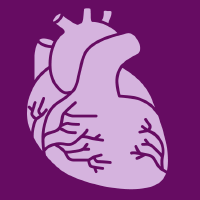Molecular and Cellular Mechanisms of Heart Disease
Topic Information
Dear Colleagues,
Heart failure is still a leading cause of mortality worldwide. Cardiomyocytes contribute to heart failure by losing the ability to generate sufficient force to pump blood into circulation. To improve the current treatment options in cardiology, it is important to have a better understanding of the biological behavior of cardiomyocytes. The function of these cells cannot be completely understood independently of the interaction with surrounding cells, i.e., cardiac fibroblasts and vascular cells. Nevertheless, cardiomyocytes are the cells that must generate heart work. They can modify parts of their electromechanical coupling machinery, electrometabolic coupling, or increase in size via hypertrophy. However, hypertrophy can be either adaptive or maladaptive, and the transition from the one into the other type of hypertrophy is not clearly understood. Pathological hypertrophy is often characterised by cardiac fibrosis and contributes to cardiac dysfunction. Cell death, i.e., cardiomyocyte apoptosis, is another common feature of heart disease. Processes dealing with metabolism and mitochondrial function, electromechanical coupling, cell death, and electrophysiological aspects are among the processes that need to be addressed and understood in their molecular fine regulation in order to improve treatment regimes.
This Topic aims to summarize the current understanding of the process of developing heart failure with a focus on the force-generating cell, the cardiomyocyte.
Prof. Dr. Pasi Tavi
Prof. Dr. Ebru Arioglu-Inan
Topic Editors
Keywords
- cardiac metabolism
- electromechanical coupling
- regulation of cell death in the heart (apoptosis, autophagy, pyroptosis, ferroptosis, etc.)
- right heart failure
- electrophysiological aspects of cardiomyocytes
- cardiac fibrosis and hypertrophy
- mitochondrial dysfunction
Participating Journals
| Journal Name | Impact Factor | CiteScore | Launched Year | First Decision (median) | APC | |
|---|---|---|---|---|---|---|

Current Issues in Molecular Biology
|
3.0 | 3.7 | 1999 | 17.8 Days | CHF 2200 | Submit |

International Journal of Molecular Sciences
|
4.9 | 9.0 | 2000 | 20.5 Days | CHF 2900 | Submit |

Journal of Cardiovascular Development and Disease
|
2.3 | 3.7 | 2014 | 28.8 Days | CHF 2700 | Submit |

Organoids
|
- | - | 2022 | 25.6 Days | CHF 1000 | Submit |

Biomedicines
|
3.9 | 6.8 | 2013 | 17 Days | CHF 2600 | Submit |

Preprints.org is a multidisciplinary platform offering a preprint service designed to facilitate the early sharing of your research. It supports and empowers your research journey from the very beginning.
MDPI Topics is collaborating with Preprints.org and has established a direct connection between MDPI journals and the platform. Authors are encouraged to take advantage of this opportunity by posting their preprints at Preprints.org prior to publication:
- Share your research immediately: disseminate your ideas prior to publication and establish priority for your work.
- Safeguard your intellectual contribution: Protect your ideas with a time-stamped preprint that serves as proof of your research timeline.
- Boost visibility and impact: Increase the reach and influence of your research by making it accessible to a global audience.
- Gain early feedback: Receive valuable input and insights from peers before submitting to a journal.
- Ensure broad indexing: Web of Science (Preprint Citation Index), Google Scholar, Crossref, SHARE, PrePubMed, Scilit and Europe PMC.


